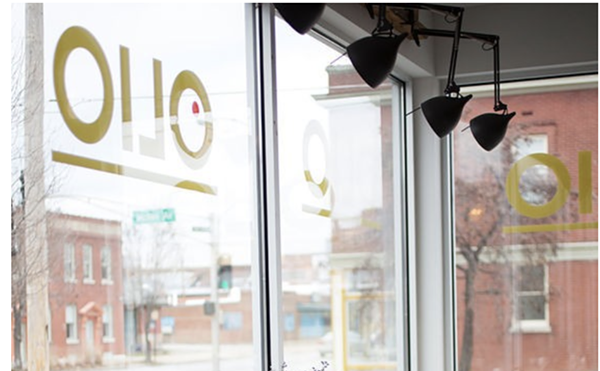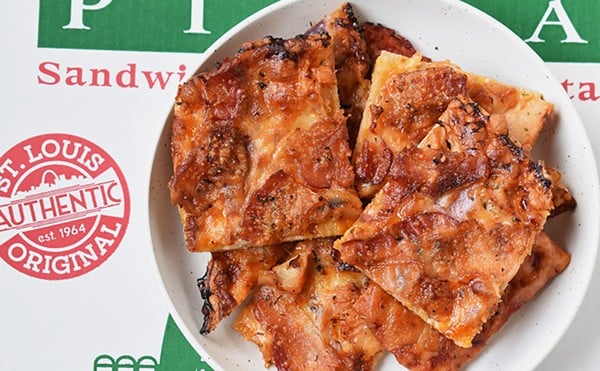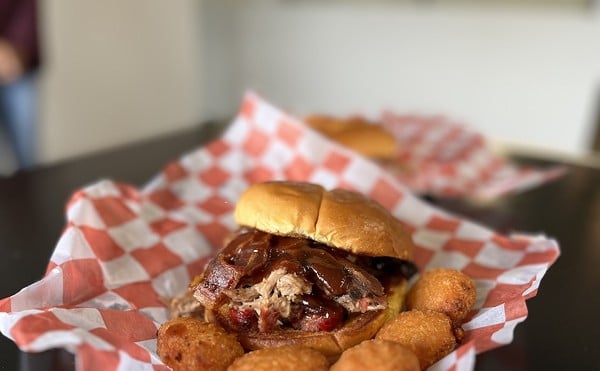The questions sent me scrambling for my reference books, wondering whether, perhaps, I'd in fact misinterpreted the validity of the many crèmes brûlées that I'd been served with a warm-to-tepid shell on top, somewhere between room temperature and cool underneath. Perhaps these were just Midwestern anomalies and I should be ashamed of my bumpkinishness.
Recipe forensics is a kick.
First and foremost, it appears that crème brûlée, despite its name, probably isn't French in origin at all (although it may be). Mastering the Art of French Cooking (co-written almost 40 years ago by Julia Child with Louisette Bertholle and Simone Beck), places crème brûlée's origins in Cambridge, England; this seems to be borne out by one of my primary sources for French food information, the Larousse Gastronomique, which doesn't list it at all. Several sources, among them the cookbook of Saveur magazine, list as an additional probable precursor the crema Catalana from Spain, and Michael Buller's French Chefs Cooking says that Sirio Maccioni, the owner of Le Cirque 2000 in New York City, who is often credited with the explosion of popularity of the dish, adapted a Spanish recipe.
Virtually every cookbook and food reference book (as well as Web reference) that I found agrees on what crème brûlée is: a custard that, before serving, is sprinkled on top with a thin layer of brown sugar that's in turn caramelized and left to harden. Interestingly enough, Julia Child's early masterwork doesn't say this at all -- and, indeed, doesn't even give the full recipe, instead suggesting that you substitute a pulverized almond carmelization called pralin as the topping, never even mentioning the broiling.
Last May, Allison Arnett, food critic for the Boston Globe (I hear that's a city well east of here), went as far as to tout crème brûlée as the No. 1 restaurant dessert, served in everything from the finest French restaurants to everyday suburban cafes. She gets it everywhere, she wrote, but she also noted that she's "had some really bad crème brûlée," among which she included "cold from the fridge."
Well, sir, it sure made me feel good that a big-city critic had the same interpretation as small-town little me. But it turns out that any number of reliable sources disagree with us. Between cookbooks and Web references, it was pretty much an even split as to what to do after you caramelize the sugar. Craig Claiborne's The New York Times Cookbook even plays it both ways: "Serve immediately or chill again and serve cold." And the official brûléeur at Le Cirque, Francisco Gutierrez, was quoted even more ambivalently in a 1997 article in Restaurant Hospitality magazine: "It's crunchy, hot and cold."
On the cold front, the recipe published by leading New Orleans restaurant Arnaud's says "refrigerate until ready to serve," but the cookbook by Georges Perrier at Le Bec-Fin, perhaps Philadelphia's finest restaurant, specifically calls for the custard to be "set and at room temperature" and then served immediately afterward. Because I don't travel as frequently as some, I haven't eaten recently at Le Bec-Fin -- at least not since last year -- so I can't verify whether this "old-fashioned" approach is still applied. But I'd bet it is.
Meanwhile, I still prefer mine in the style Perrier describes. But you can also bet that I'm now going to make a habit of inquiring how it's served before I order it, lest I get my short orders in a knot over nothing. And I'll certainly be paying even closer attention if I'm lucky enough to get back to Le Bec-Fin or to Daniel, Le Français or Ambroisie -- asssuming, of course, that what's trendy out here in the hinterlands is still on the menu in the big city.





